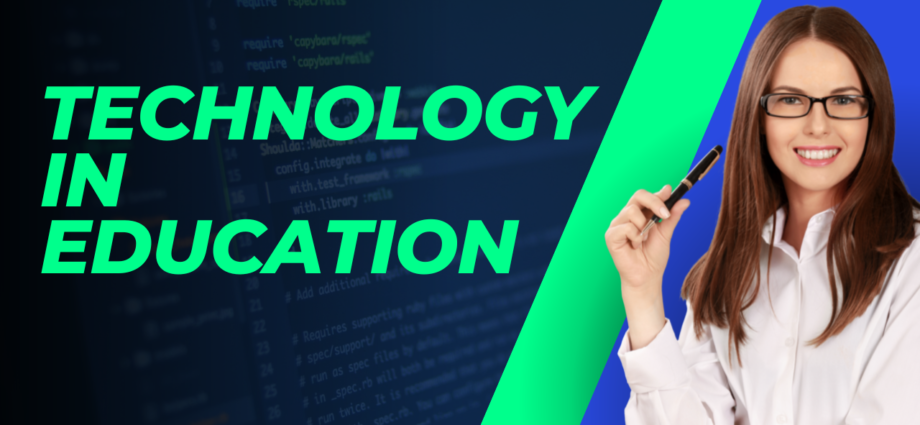Technology has become an increasingly integral part of our daily lives and has revolutionized the way we interact with the world around us. The same holds true for the field of education, where technology has had a profound impact and is continuing to shape the way we teach and learn.
From online learning platforms to virtual classrooms, technology has made education more accessible and convenient for students of all ages and backgrounds. The integration of technology in education has not only made the learning process more efficient, but it has also opened up new avenues for creativity, collaboration, and growth.
In this article, we will take a closer look at the role of technology in education and how it has transformed the classroom experience.
The Advantages of Technology in Education
The use of technology in education brings numerous benefits to both students and teachers. Here are some of the most notable advantages of technology in education:
Improved Accessibility
One of the biggest advantages of technology in education is that it has made learning more accessible to students. With online learning platforms, students can access educational resources from anywhere, at any time. This is especially beneficial for students who live in remote areas, have disabilities, or have other limitations that make traditional classroom learning difficult.
Enhanced Engagement
Technology in education has also helped to enhance student engagement. Interactive tools and multimedia resources can keep students engaged and motivated, making the learning process more enjoyable and effective. Virtual reality, for example, allows students to experience simulations of real-world scenarios, making lessons more interactive and memorable.
Increased Collaboration
Technology has also made it easier for students to collaborate and work together on projects. Online platforms and collaboration tools allow students to communicate and share their work with one another, regardless of location. This creates a more inclusive and dynamic learning environment, where students can support each other and learn from each other’s perspectives.
Improved Assessment and Feedback
Technology in education has also transformed the way teachers assess and provide feedback to students. With online resources and tools, teachers can quickly and easily track student progress and provide personalized feedback that is tailored to each student’s needs. This helps to ensure that students are receiving the support and guidance they need to succeed.
Integrating Technology in the Classroom
While the advantages of technology in education are clear, the integration of technology in the classroom is not without its challenges. Here are some best practices for successfully integrating technology in the classroom:
Start with a Clear Purpose
When integrating technology in the classroom, it is important to start with a clear purpose. Teachers should determine what they hope to achieve with technology, such as improving student engagement, enhancing collaboration, or providing more personalized feedback. This will help to guide their decision-making and ensure that they are using technology in the most effective way possible.
Choose the Right Tools
There are countless technology tools available for teachers to choose from, so it is important to carefully consider which tools are right for their needs. Teachers should choose tools that are easy to use, reliable, and align with their goals for using technology in the classroom.
Provide Training and Support
When integrating technology in the classroom, it is also important to provide teachers and students with the training and support they need to succeed. Teachers should be trained on how to effectively use the technology tools they have chosen, and students should be given opportunities to practice and develop their skills.
Balance Technology and Traditional Teaching Methods
While technology can bring many benefits to the classroom, it is important to balance technology with traditional teaching methods. Teachers should find a healthy balance between using technology to enhance their lessons
continuing to use traditional teaching methods, such as lectures and hands-on activities, to create a well-rounded learning experience for their students.
Assess and Adapt
Finally, it is important to assess the impact of technology in the classroom and make any necessary adjustments. Teachers should regularly evaluate how well technology is meeting their goals and make changes as needed to ensure that they are using technology in the most effective way possible.
The Future of Technology in Education
As technology continues to evolve and advance, it is likely that it will continue to play a significant role in the field of education. In the future, we may see the development of even more innovative and interactive technology tools that enhance the learning experience for students.
Some experts predict that virtual and augmented reality will become more prevalent in the classroom, allowing students to experience simulations of real-world scenarios in a more immersive way. Additionally, artificial intelligence and machine learning may play a greater role in education, allowing for more personalized and adaptive learning experiences.
In conclusion, technology has already had a profound impact on the field of education and has the potential to transform the way we teach and learn in the future. By leveraging the advantages of technology in the classroom, educators can create a dynamic and engaging learning experience for their students, and help to prepare them for success in an ever-changing world.

